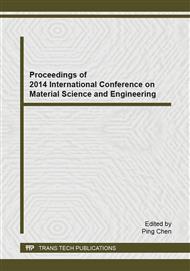p.445
p.453
p.458
p.464
p.469
p.476
p.483
p.488
p.492
The Application of Optical Emission Spectrum in Copper Film Deposition by RF Magnetron Sputtering
Abstract:
Optical Emission Spectrum (OES) was utilized to monitor the deposition procedure of copper film byradio frequency (RF) magnetron sputtering.The plasma was found to contain Ar, Ar+, Cu and Cu+ when Argon was the working gas. The OES intensity of each composition increased with the increase of the input power of sputtering. Furthermore, intensity of Cu was higher than that ofAr, Ar+ and Cu+. The mechanical property of as-deposited Cu film was measured by scratch test method. It was found that with the increase of the input power, the adhesion strength possessed the maximum value while the square resistance decreased and surface roughness obviously. Theory calculation shows these properties were connected to kinetic energy of atoms in the plasma.
Info:
Periodical:
Pages:
469-475
Citation:
Online since:
October 2014
Authors:
Price:
Сopyright:
© 2014 Trans Tech Publications Ltd. All Rights Reserved
Share:
Citation:


